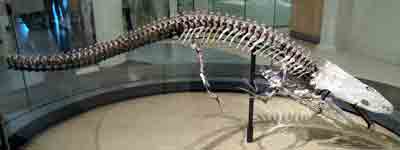Rare! Fossil Tooth Prehistoric Giant Amphibian mm 12 x 5 x 4 Koskinonodon perfectus Labyrinthodonts Extinct Temnospondyls Mesozoic Triassic Collecting Paleontology Museum.
Also known as Buettneria or Apachesaurus.
Teeth of Apachesaurus specimens are on sale at this link.
Remarkable, very large fossil specimen of an adult specimen, a finding that is difficult to find, considering that teeth of this size from Bull Canyon are difficult to obtain as they are not found very often, and larger teeth are very rare.
Representative fossil for collection and of excellent quality, with clear anterior and posterior details of the tooth surfaces and well-preserved enamel and extremities.
No restored at all. Only a piece, as in photos.
Koskinonodon (Temnospondylia - Stereospondylia - Metoposauridae) is an Extinct genus of large Amphibians that in the late Triassic filled the same predatory niches then occupied by Crocodiles.
It was very common during the Noricum, in what is now the American southwest. At the beginning of the Jurassic most of the temnospondyls, including Koskinonodon, had disappeared. They are likely to have died out during the Triassic-Jurassic transition event, along with most other large amphibians, the Conodonti class and 34% of all marine genera. We do not know what caused this mass extinction; the hypotheses include huge volcanic eruptions, climate changes, ocean acidification and even another impact with an asteroid. It is known, however, that more than half of the species living on Earth became extinct as a result of this event.

Koskinonodon may have reached up to
3 m in length, with a very large 65 cm long skull, and large jaws that could hold
many sharp and pointed teeth simultaneously, perhaps even more than 100 on each side of the upper and lower jaw, with the actual number which constantly varied during the life of the animal. It had both marginal teeth and larger teeth on the palate, of two types: large ones with shallow and small furrows with deeper furrows. These grooves ran longitudinally along the teeth, optimizing them to pierce the prey and prevent it from escaping, resisting the bending force applied by the struggling organism and propagating the cracks in the hard parts such as the bones, allowing easier feeding and digestion. These dental adaptations improved Koskinonodon's ability to capture prey.
He also had a large, wedge-shaped tail, to assist him in swimming, hunting, and probably even in defense. It was not as long as that of today's crocodiles, but robust enough to allow him to quickly get out of hiding to catch prey before he could escape. The legs were short with 4 fingers on the front limbs and 5 on the hind legs. Koskinonodon probably spent a lot of time motionless, waiting for prey, as his small, sturdy legs were active hunting.
The hunting style of Koskinonodon consisted of lying at the bottom of a shallow swamp, waiting for a fish, a crustacean, a smaller amphibian or even a young phytosaurus. When he identified the prey, he used his huge jaws to swallow and consume it. Some particular adaptations suggest that the Koskinonodon had this aquatic lifestyle. First of all, they had lateral lines formed by sensory furrows. These are useful for detecting changes in water pressure caused by movements due to swimming of proximal organisms. Even their stretched legs were adapted for water. They would not move quickly or efficiently to the ground, although they might have done so to find another pool of water with more food or other resources. Common graves were found, perhaps the result of a group of these animals gathering in a pool of water that had dried up during a period of drought.
He lived in superficial and marshy habitats alongside many other small amphibians, and his fossils were commonly found with remnants of phytosaurs. The best conditions for fossilization occur in river valleys or in floodplains. Koskinonodon is famous for its extremely well preserved fossils, often found in groups.
Most of Koskinonodon fossils were found in the United States, but also in India.
The genus was formerly called
Buettneria da Case in 1922, but in 2007, B.D. Mueller realized that the name Buettneria had already been given to a bush, and so was renamed in the genus
Koskinonodon. The final ending -odon, means that it possessed a specific dental form.
The two known species are K. perfectus and K. bakeri, which differ in some characteristics, such as the skull orbit.
In 2017, the contemporary
Apachesaurus gregorii was found to be a juvenile stage of Koskinonodon perfectus.
Synonyms: Buettneria perfecta, Apachesaurus gregorii, Metoposaurus bakeri, Eupelor.



